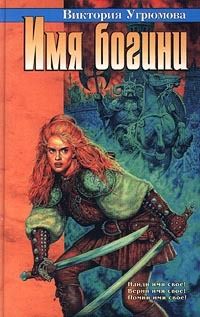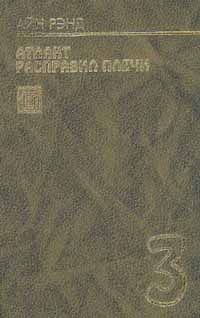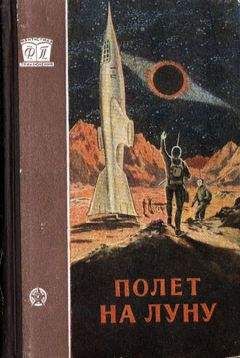Ознакомительная версия.
Kosslyn, S.M., Brunn, J., Cave, K.R., & Wallach, R.W. (1984). Individual differences in mental imagery ability: A computational analysis. Cognition, 18, 195–243.
Kosslyn, S.M., Holtzman, J.D., Farah, M.J., & Gazzaniga, M.S. (1985). A computational analysis of mental image generation: Evidence from functional dissociations in split-brain patients. Journal of Experimental Psychology: General, 114, 311–341.
Kosslyn, S.M., & Koenig, O. (1992). Wet mind: The new cognitive neuroscience. New York: Free Press.
Kosslyn, S.M., & Pomerantz, J.R. (1977). Imagery, propositions, and the form of internal representation. Cognitive Psychology, 9, 52–76.
Kosslyn, S.M., Van Kleeck, M.H., & Kirby, K.N. (1990). A neurologically plausible model of individual differences in visual mental imagery. In P.J. Hampson, D.F. Marks, & J.T.E. Richardson (Eds), Imagery: Current developments (pp. 39–77). London: Routledge.
Lambert, A.J., & Beaumont, J.G. (1981). Comparative processing of imageable nouns in the left and right visual fields. Cortex, 17, 411–418.
Levin, H.S., & Goldstein, F.C. (1986). Organization of verbal memory after severe closed-head injury. Journal of Clinical and Experimental Neuropsychology, 8, 643–656. Levine, D.N., Warach, J. & Farah, M. (1985). Two visual systems in mental imagery: Dissociation of “what” and “where” in imagery disorders due to bilateral posterior cerebral lesions. Neurology, 35, 1010–1018.
Ley, R.G. (1983). Cerebral laterality and imagery. In A.A. Sheikh (Ed.), Imagery: Current theory, research and application (pp. 252–287). New York: Wiley.
Linn, M.C., & Petersen, A.C. (1985). Emergence and characterization of sex differences in spatial ability: A metaanalysis. Child Development, 56, 1479–1498.
Lister, R.G., & Weingartner, H.J. (1987). Neu-ropharmacological strategies for understanding psychobiological determinants of cognition. Human Neurobiology, 6, 119–127.
Loftus, E.F., & Loftus, G.R. (1980). On the permanence of stored information in the human brain. American Psychologist, 35, 409–420.
Logie, R.H. (1986). Visuo-spatial processes in working memory. Quarterly Journal of Experimental Psychology, 38A, 229–247.
Logie, R.H. (1995). Visuo-spatial working memory. Hove, UK: Lawrence Erlbaum Associates Ltd.
Logie, R.H. (1996). The seven ages of working memory. In J.T.E. Richardson, R.W. Engle, L. Hasher, R.H. Logie, E.R. Stoltzfus, & R.T. Zacks, Working memory and human cognition (pp. 31–65). New York: Oxford University Press.
Lorenz, C, & Neisser, U. (1985). Factors of imagery and event recall. Memory and Cognition, 13, 494–500.
McDaniel, M.A., & Kearney, E.M. (1984). Optimal learning strategies and their spontaneous use: The importance of task-appropriate processing. Memory and Cognition, 12, 361–373.
McDaniel, M.A., & Pressley, M. (1984). Putting the keyword method in context. Journal of Educational Psychology, 16, 598–609.
McDougall, S., & Velmans, M. (1993). Encoding strategy dynamics: When relationships between words determine strategy use. British Journal of Psychology, 84, 227–248.
McGeer, P.L. (1984). Aging, Alzheimer’s disease, and the cholinergic system. Canadian Journal of Physiology and Pharmacology, 62, 741–754.
McKelvie, S.J. (1979). Effects of instruction and format on reported visual imagery. Perceptual and
Motor Skills, 49, 567–571.
McKelvie, S.J. (1986). Effects of format of the Vividness of Visual Imagery Questionnaire on content validity, split-half reliability, and the role of memory in test-retest reliability. British Journal of Psychology, 77, 229–236.
McKelvie, S.J. (1995). The VVIQ as a psychometric test of individual differences in visual imagery vividness: A critical quantitative review and plea for direction. Journal of Mental Imagery, 29(3 & 4), 1-106.
Mandler, G. (1967). Organization and memory. In K.W. Spence & J.T. Spence (Eds), The psychology of learning and motivation: Advances in research and theory (Vol. 1, pp. 327–372). New York: Academic Press.
Marks, D.F. (1973). Visual imagery differences in the recall of pictures. British Journal of Psychology, 64, 17–24.
Marks, D.F. (1983). Mental imagery and consciousness: A theoretical review. In A.A. Sheikh (Ed.), Imagery: Current theory, research, and application (pp. 96-130). New York: Wiley.
Marks, D.F. (1990). On the relationship between imagery, body and mind. In P.J. Hampson, D.F. Marks, & J.T.E. Richardson (Eds), Imagery: Current developments (pp. 1-38). London: Routledge.
Marks, D.F., & Isaac, A.R. (1995). Topographical distribution of EEG activity accompanying visual and motor imagery in vivid and non-vivid imagers. British Journal of Psychology, 86, 271–282.
Marquer, J., & Pereira, M. (1990). Reaction times in the study of strategies in sentence-picture verification: A reconsideration. Quarterly Journal of Experimental Psychology, 42A, 147–168.
Marschark, M. (1985). Imagery and organization in the recall of prose. Journal of Memory and Language, 24, 734–745.
Marschark, M., & Cornoldi, С (1991). Imagery and verbal memory. In C. Cornoldi & M.A. McDaniel (Eds), Imagery and cognition (pp. 133–182). New York: Springer-Verlag.
Marschark, M., Cornoldi, C, Huffman, C.J., Pe,
G., & Garzari, F. (1994). Why are there sometimes concreteness effects in memory for prose? Memory, 2, 75–96.
Marschark, M., & Hunt, R.R. (1989). A reexamination of the role of imagery in learning and memory. Journal of Experimental Psychology: Learning, Memory, and Cognition, 15, 710–720.
Marschark, M., Richman, C.L., Yuille, J.C., & Hunt, R.R. (1987). The role of imagery in memory: On shared and distinctive information. Psychological Bulletin, 102, 28–41.
Marschark, M., & Surian, L. (1992). Concreteness effects in free recall: The roles of imaginal and relational processing. Memory and Cognition, 20, 612–620.
Marshall, J.C., Halligan, P.W., & Robertson, LH. (1993). Contemporary theories of unilateral neglect: A critical review. In LH. Robertson & J.C. Marshall (Eds), Unilateral neglect: Clinical and experimental studies (pp. 311–329). Hove, UK: Lawrence Erlbaum Associates Ltd.
Martin, C.J., Boersma, F.J., & Cox, D.L. (1965). A classification of associative strategies in paired-associate learning. Psychonomic Science, 3, 455–456.
Matthews, W.A. (1983). The effects of concurrent secondary tasks on the use of imagery in a free recall task. Acta Psychologica, 53, 231–241.
Meador, K.J., Loring, D.W., Bowers, D., & Heilman, K.M. (1987). Remote memory and neglect syndrome. Neurology, 37, 522–526.
Meador, K.J., Loring, D.W., Lee, G.P., Brooks, B.S., Nichols, F.T., Thompson, E.E., Thompson, W.O., & Heilman, K.M. (1989). Hemisphere asymmetry for eye gaze mechanisms. Brain, 112, 103–111.
Mesulam, M.-M. (1985). Attention, confusional states, and neglect. In M.-M. Mesulam (Ed.), Principles of behavioral neurology (pp. 125–168). Philadelphia, PA: F.A. Davis.
Mellet, E., Tzourio, N., Denis, M., & Mazoyer, B. (1995). A positron emission tomography study of visual and mental spatial exploration. Journal of Cognitive Neuroscience, 7, 433–445.
Meudell, P.R. (1971). Retrieval and representations in long-term memory. Psychonomic
Science, 23, 295–296.
Milner, B. (1966). Amnesia following operation on the temporal lobes. In C.W.M. Whitty, & O.L. Zangwill (Eds), Amnesia (pp. 109–133). London: Butterworths.
Milner, B. (1971). Interhemispheric differences in the localization of psychological processes in man. British Medical Bulletin, 27, 272–277.
Milner, В., Taylor, L., & Jones-Gotman, M. (1990). Lessons from cerebral commis-suro-tomy: Auditory attention, haptic memory and visual images in verbal associative-learning. In С Trevarthen (Ed.), Brain circuits and functions of the mind: Essays in honor of Roger W. Sperry (pp. 294–303). Cambridge, UK: Cambridge University Press.
Morris, P.E., & Stevens, R. (1974). Linking images and free recall. Journal of Verbal Learning and Verbal Behavior, 13, 310–315.
Moyer, R.S. (1973). Comparing objects in memory: Evidence suggesting an internal psychophysics. Perception and Psychophysics, 13, 180–184.
Mullen, B. (1989). Advanced BASIC metaanalysis. Hillsdale, NJ: Erlbaum.
Neisser, U., & Kerr, N. (1973). Spatial and mnemonic properties of visual images. Cognitive Psychology, 5, 138–150.
Ogden, J.A. (1985). Contralesional neglect of constructed visual images in right and left brain-damaged patients. Neuropsychologia, 23, 273–277.
Paivio, A. (1969). Mental imagery in associative learning and memory. Psychological Review, 76, 241–263.
Paivio, A. (1971). Imagery and verbal processes. New York: Holt, Rinehart, & Winston.
Paivio, A. (1972). A theoretical analysis of the role of imagery in learning and memory. In P.W. Sheehan (Ed.), The function and nature of imagery (pp. 253–279). New York: Academic Press.
Paivio, A. (1975a). Imagery and synchronic thinking. Canadian Psychological Review, 16, 147–163.
Paivio, A. (1975b). Perceptual comparisons through the mind’s eye. Memory and Cognition, 3, 635–647.
Paivio, A. (1978a). Comparisons of mental clocks. Journal of Experimental Psychology: Human Perception and Performance, 4, 61–71.
Paivio, A. (1978b). Dual coding: Theoretical issues and empirical evidence. In J.M. Scandura & C.J. Brainerd (Eds), Structural/process models of complex human behavior (pp. 527–549). Alphen aan den Rijn: Sijthoff & Noordhoff.
Paivio, A. (1978c). Mental comparisons involving abstract attributes. Memory and Cognition, 6, 199–208.
Paivio, A. (1978d). The relationship between verbal and perceptual codes. In E.C. Carterette & M.P. Friedman (Eds), Handbook of perception: Vol. VIII. Perceptual coding (pp. 375–397). New York: Academic Press.
Paivio, A. (1986). Mental representations: A dual coding approach. New York: Oxford University Press.
Paivio, A., & Clark, J.M. (1991). Static versus dynamic imagery. In C. Cornoldi & M.A. McDaniel (Eds), Imagery and cognition (pp. 221–245). New York: Springer-Verlag.
Paivio, A., & Foth, D. (1970). Imaginal and verbal mediators and noun concreteness in paired-associate learning: The elusive interaction. Journal of Verbal Learning and Verbal Behavior, 9, 384–390.
Paivio, A., & Harshman, R.A. (1983). Factor analysis of a questionnaire on imagery and verbal habits and skills. Canadian Journal of Psychology, 37, 461–483.
Paivio, A., & Yuille, J.C. (1967). Mediation instructions and word attributes in paired-associate learning. Psychonomic Science, 8, 65–66.
Paivio, A., & Yuille, J.C. (1969). Changes in associative strategies and paired-associate learning over trials as a function of word imagery and type of learning set. Journal of Experimental Psychology, 79, 458–463.
Paivio, A., Yuille, J.C, & Madigan, S.A. (1968).
Concreteness, imagery, and meaningfulness values for 925 nouns. Journal of Experimental Psychology Monographs, 76(1, Pt. 2).
Paivio, A., Yuille, J.C, & Smythe, P.C (1966).
Stimulus and response abstractness, imagery, and meaningfulness, and reported mediators in paired-associate learning. Canadian Journal of Psychology, 20, 362–377.
Parkin, A.J. (1984). Amnesic syndrome: A lesion-specific disorder? Cortex, 20, 479–508.
Parkin, A.J., & Leng, N.R.C (1993). Neuropsychology of the amnesic syndrome. Hove, UK: Lawrence Erlbaum Associates Ltd.
Parrott, C.A. (1986). Validation report on the Verbalizer-Visualizer Questionnaire. Journal of Mental Imagery, 10(4), 39–42.
Patten, B.M. (1972). The ancient art of memory: Usefulness in treatment. Archives of Neurology, 26, 25–31.
Penfield, W. (1968). Engrams in the human brain. Proceedings of the Royal Society of Medicine, 61, 831–840.
Penfield, W., & Perot, P. (1963). The brain’s record of auditory and visual experience: A final summary and discussion. Brain, 86, 595–696.
Perrig, W.J. (1986). Imagery and the thematic storage of prose. In D.G. Russell, D.F. Marks, & J.T.E. Richardson (Eds), Imagery 2: Proceedings of the 2nd International Imagery Conference (pp. 77–82). Dunedin: Human Performance Associates.
Peterson, M.A., Kihlstrom, J.F., Rose, P.M., & Glisky, M.L. (1992). Mental images can be ambiguous: Reconstruals and reference-frame reversals. Memory and Cognition, 20, 107–123.
Petrides, M., & Milner, B. (1982). Deficits on subject-ordered tasks after frontal-and temporal-lobe lesions in man. Neuropsychologia, 20, 249–262.
Pinker, S., & Kosslyn, S.M. (1978). The representation and manipulation of three-dimensional space in mental images. Journal of Mental Imagery, 2, 69–83.
Poltrock, S.E., & Brown, P. (1984). Individual differences in visual imagery and spatial ability. Intelligence, 8, 93—138.
Prigatano, G.P., Fordyce, D.J., Zeiner, H.K., Roueche, J.R., Pepping, M., & Wood, B.C. (1986). Neuropsychological rehabilitation after brain injury. Baltimore, MD: Johns Hopkins University Press.
Pylyshyn, Z.W. (1973). What the mind’s eye tells the mind’s brain: A critique of mental imagery. Psychological Bulletin, 80, 1—24.
Quinn, J.G., & McConnell, J. (1996). Irrelevant pictures in visual working memory. Quarterly Journal of Experimental Psychology, 49A, 200–215.
Quinton, A.M. (1973). The nature of things. London: Routledge & Kegan Paul.
Ratcliff, G. (1979). Spatial thought, mental rotation, and the right cerebral hemisphere. Neuropsychologin, 17, 49–54.
Ознакомительная версия.





